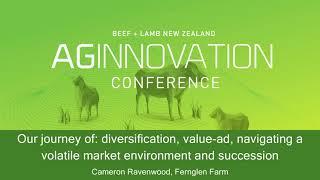Search results
Displaying 191 - 200 results of 1574
- Factsheet… guide onfarm field trials got hunch about what best way improve one your farming practices may which fertiliser apply … Guide to on-farm field trials …
- Page… Disease prevention and control require regular attention to stock health, knowledge, planning, good … Recommended practices Prevention Prevention is hugely important: develop a farm animal health plan or calendar with your …
- Factsheet… wwwbeeflambnzcom 0800 beef lamb 0800 233 352 farmers farmers 37 5 20 25 factsheet within … culling defects death going missing farm most onfarm deaths occur over lambing period many … flock cull death numbers differ from numbers report key messages factsheet relate critical …
- Factsheet… september 2021 ministry environment ministry primary industries certified freshwater farm plans regulations stock exclusion … chconzuploadspublicpublicationsworkingpapersandreportslc3901technicalreportpdf certified …
- Other PDF… regional delivery plan 2025 southern south island what doing our rdp purpose inspire farmers confidence passion gain knowledge … clutha districts farm characteristics reported below show otagosouthland data farm …
- News… The Government has provided more information on how it will reform the Resource Management … Update on RMA reform …

- Video… commodity producers to value adders, Cameron Ravenwood will take you through the journey … of their sheep milk brand, Fernglen Farm. … AgInnovation 2022: Cameron Ravenwood – Fernglen Farm …
- … (B+LNZ) and the Meat Industry Association (MIA) launched a comprehensive package of proposed policy changes ahead of the 2023 General Election. … spans five key areas – climate and environment policy, workforce and industrial …
- Page… Operator must be under direct supervision until assessed as competent by person in charge of the workplace. What equipment do you need? Gloves (optional) Eye protection (optional) General …
